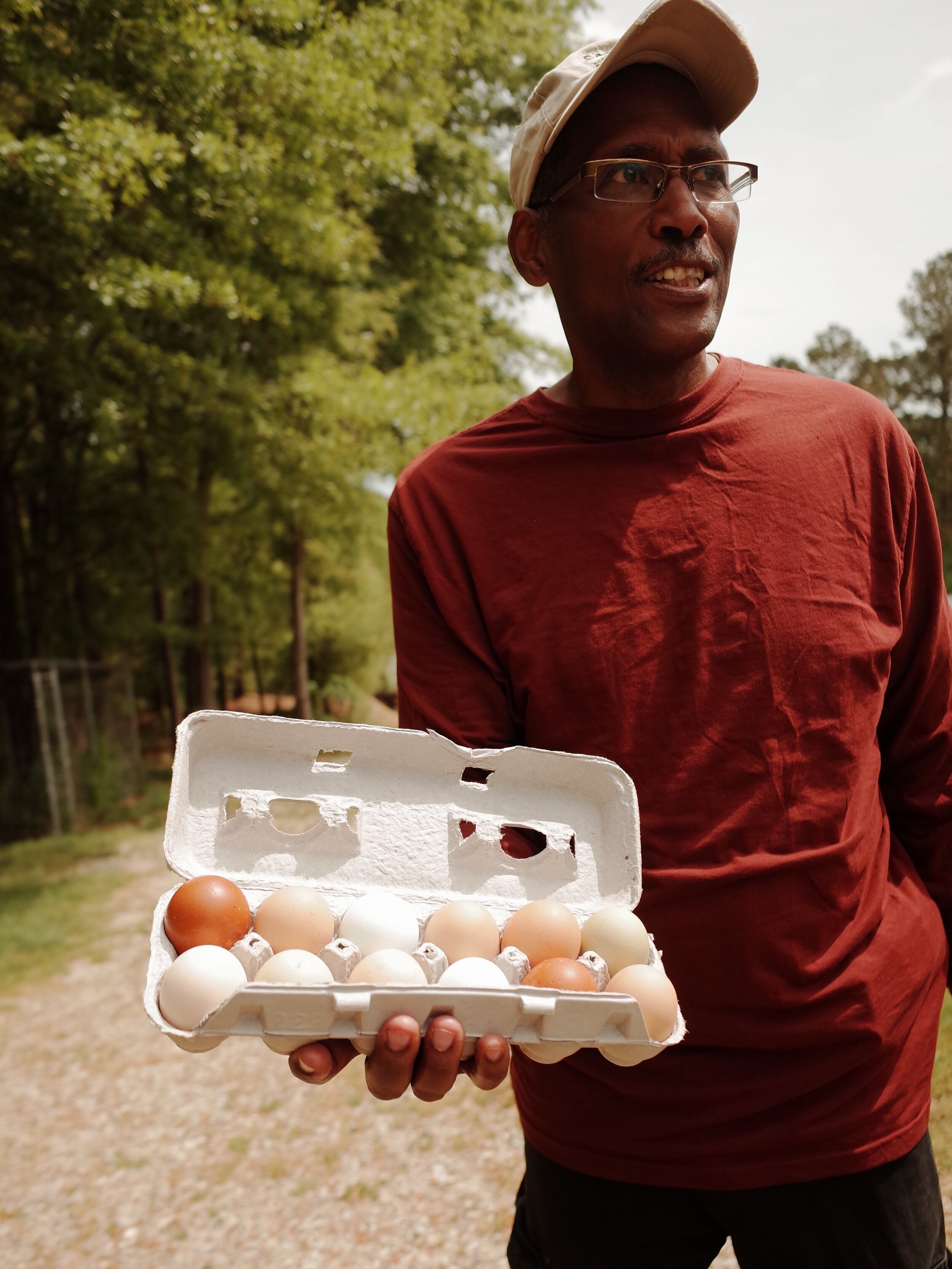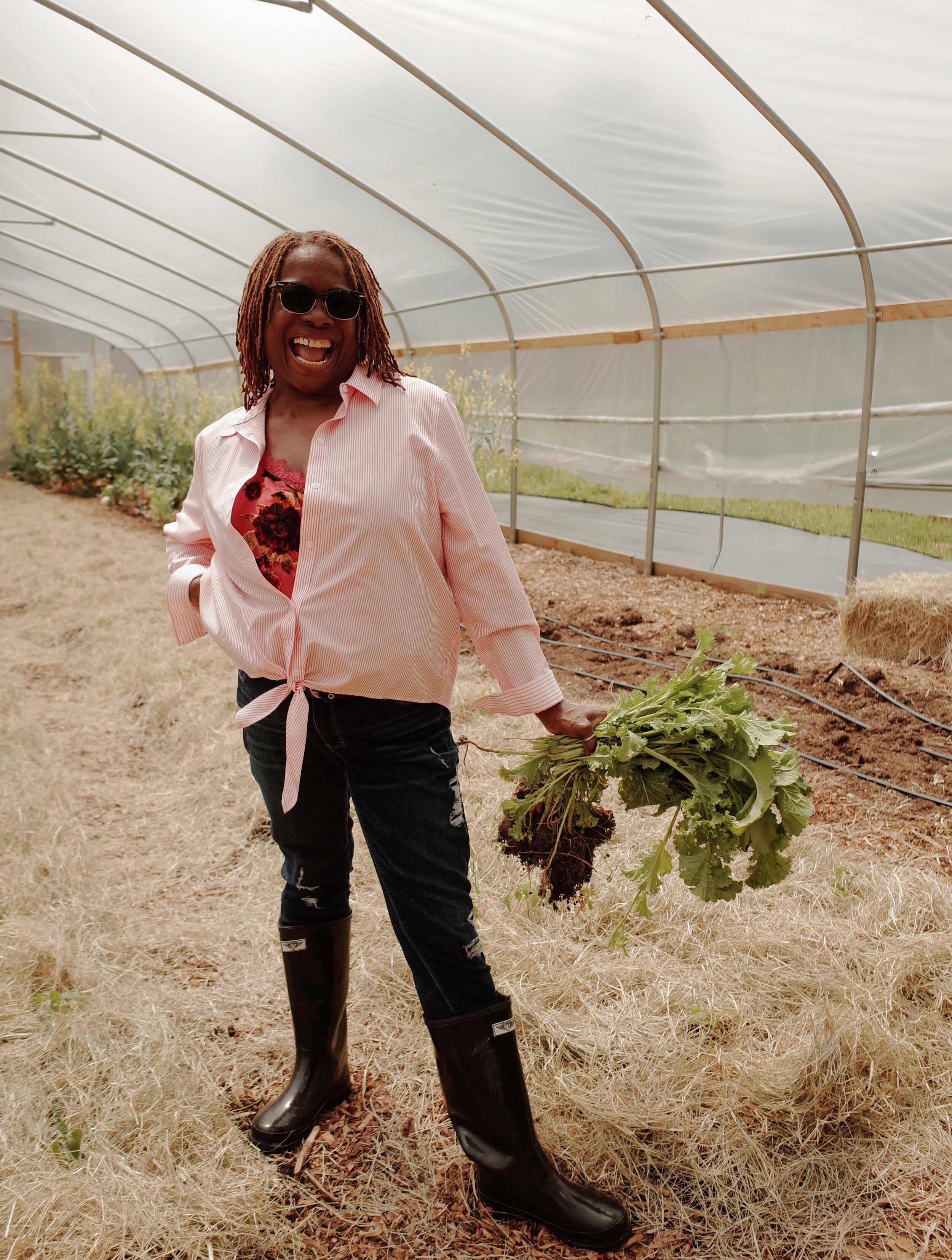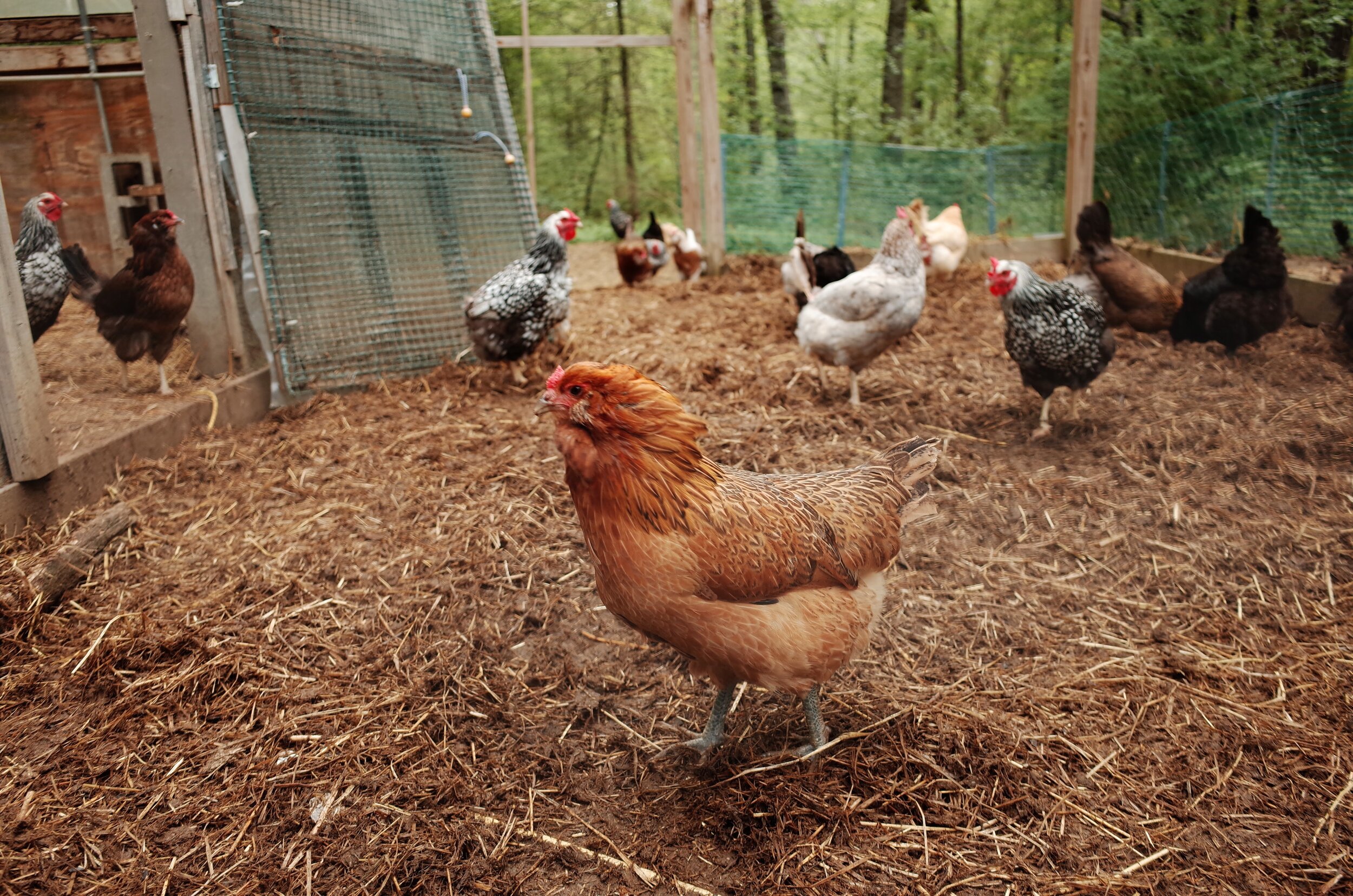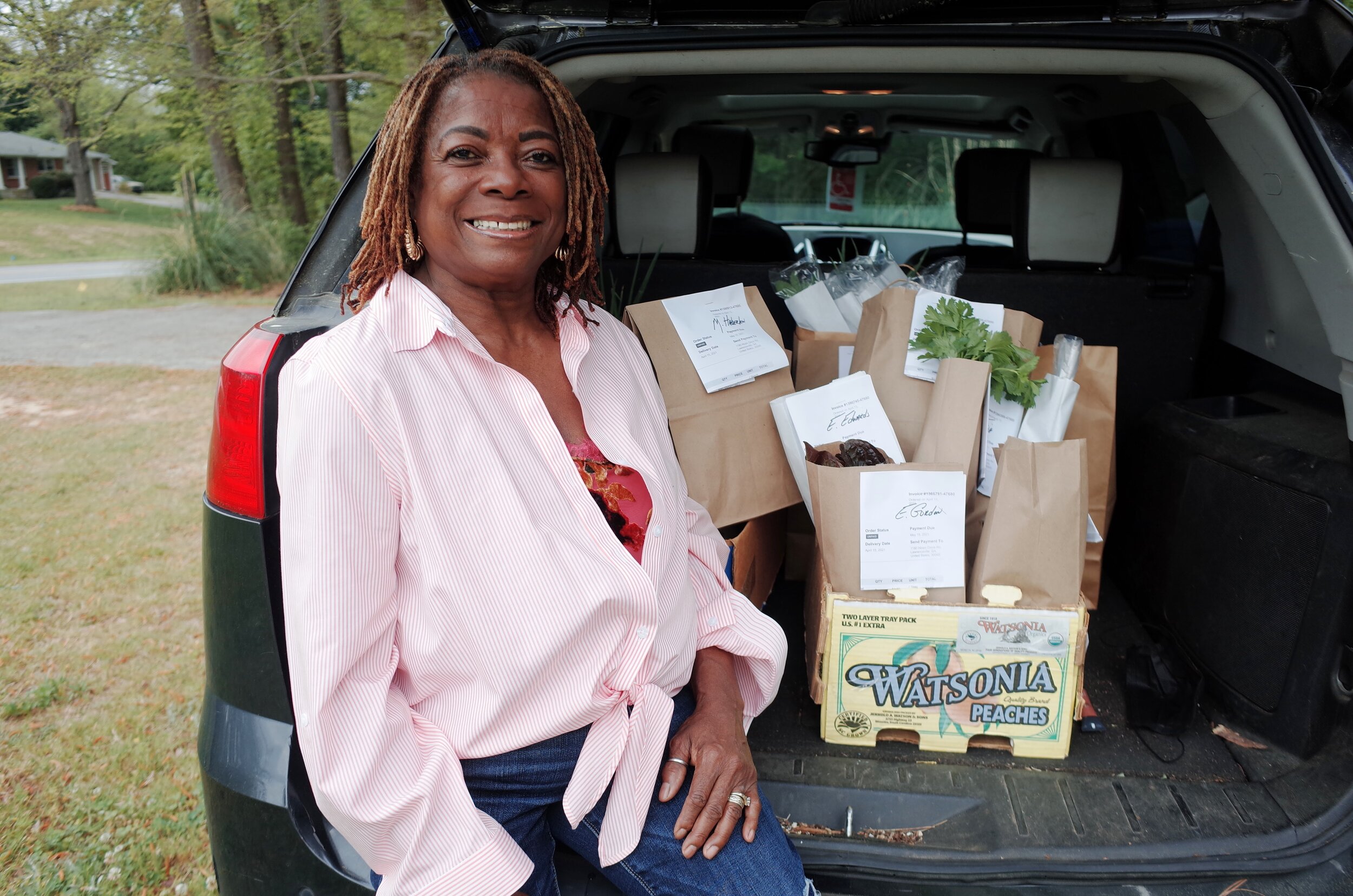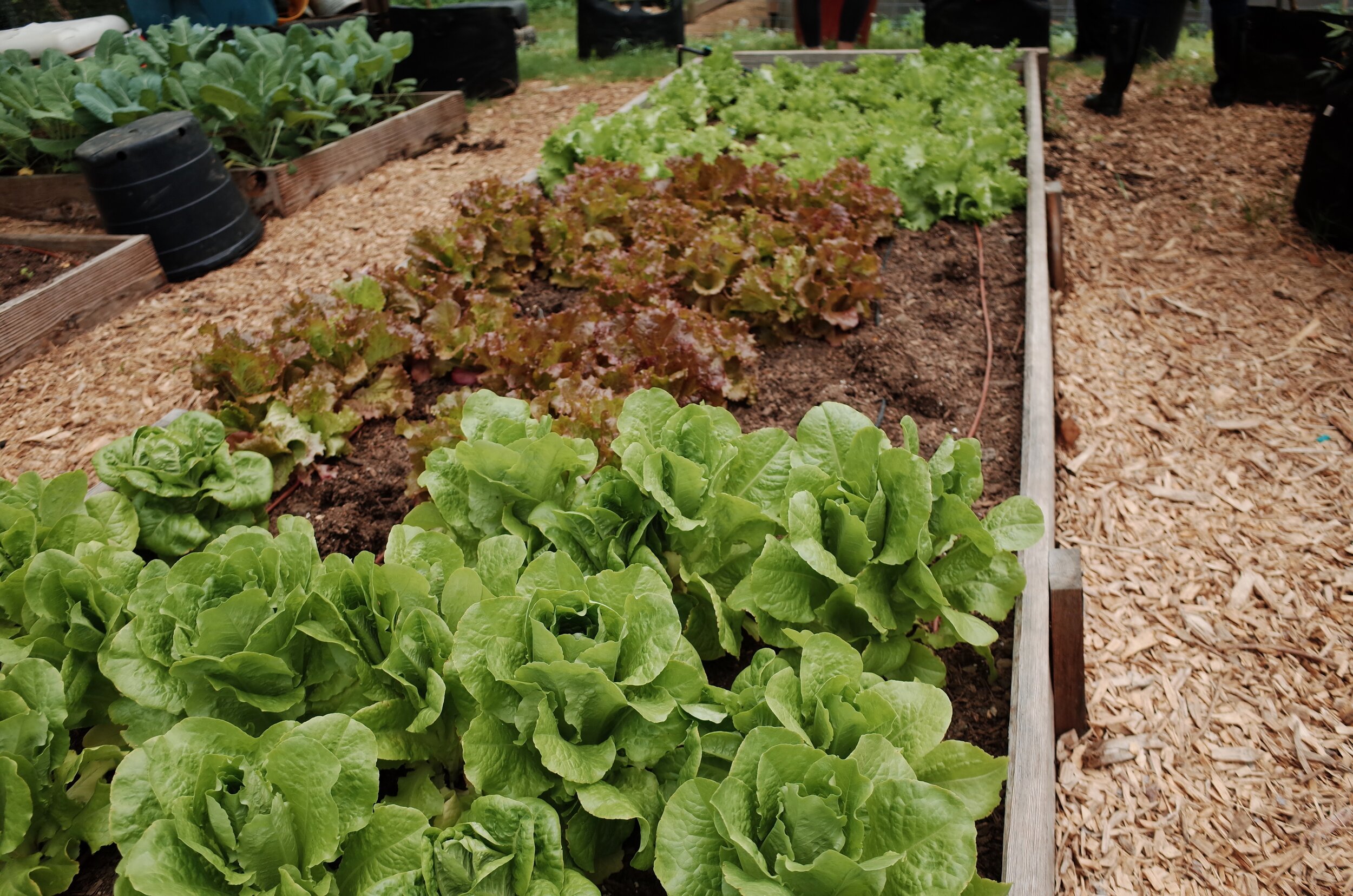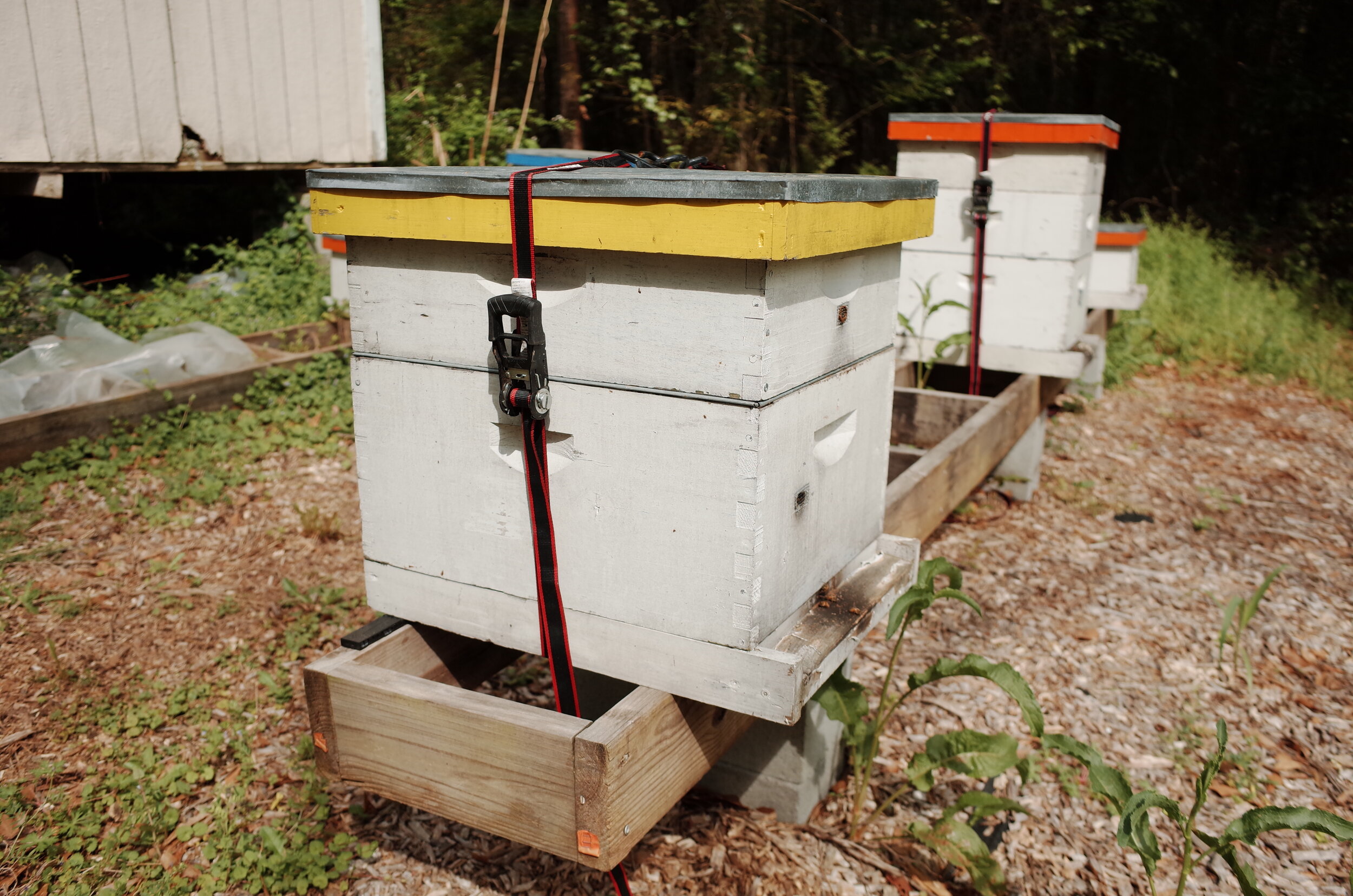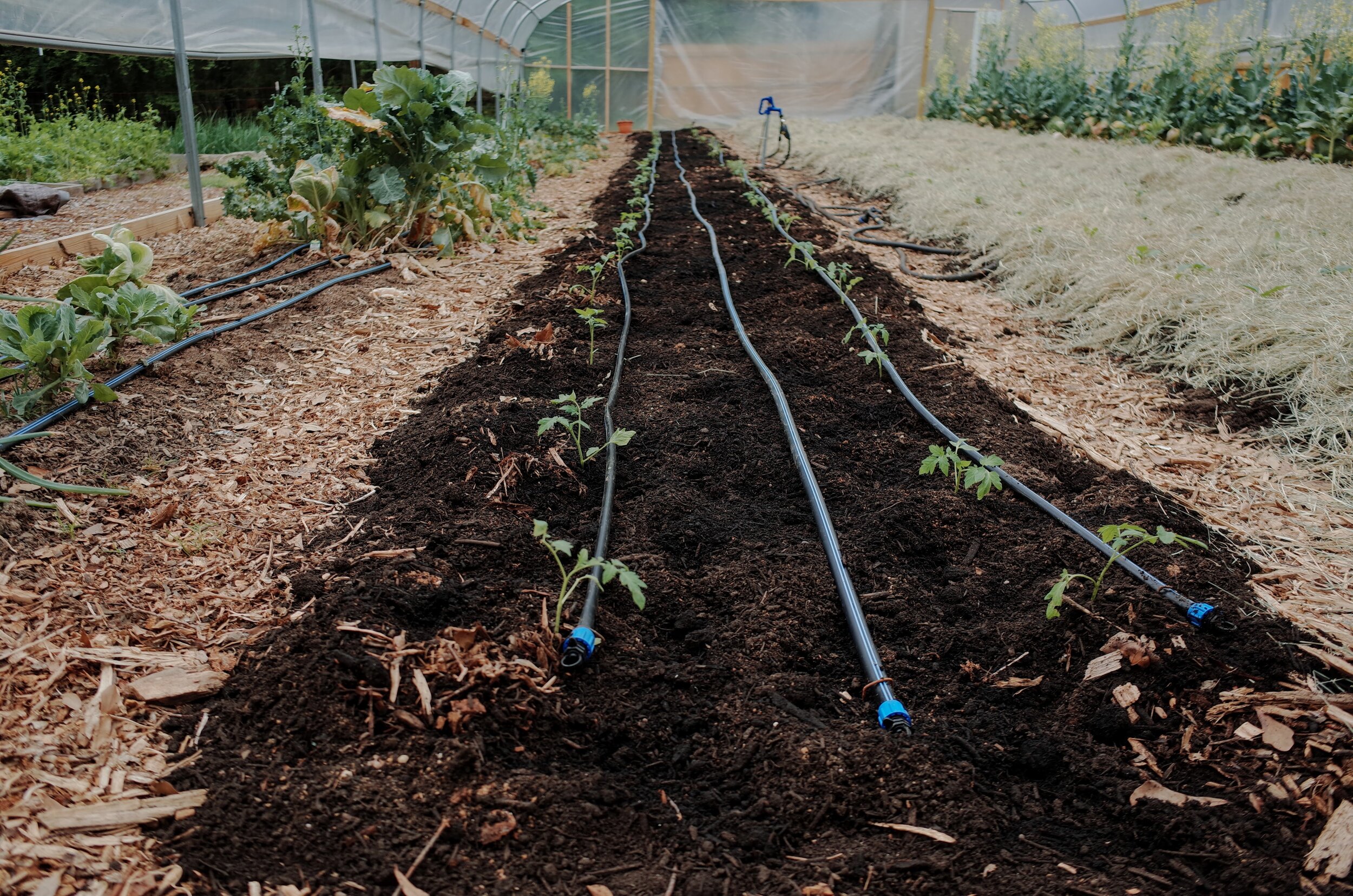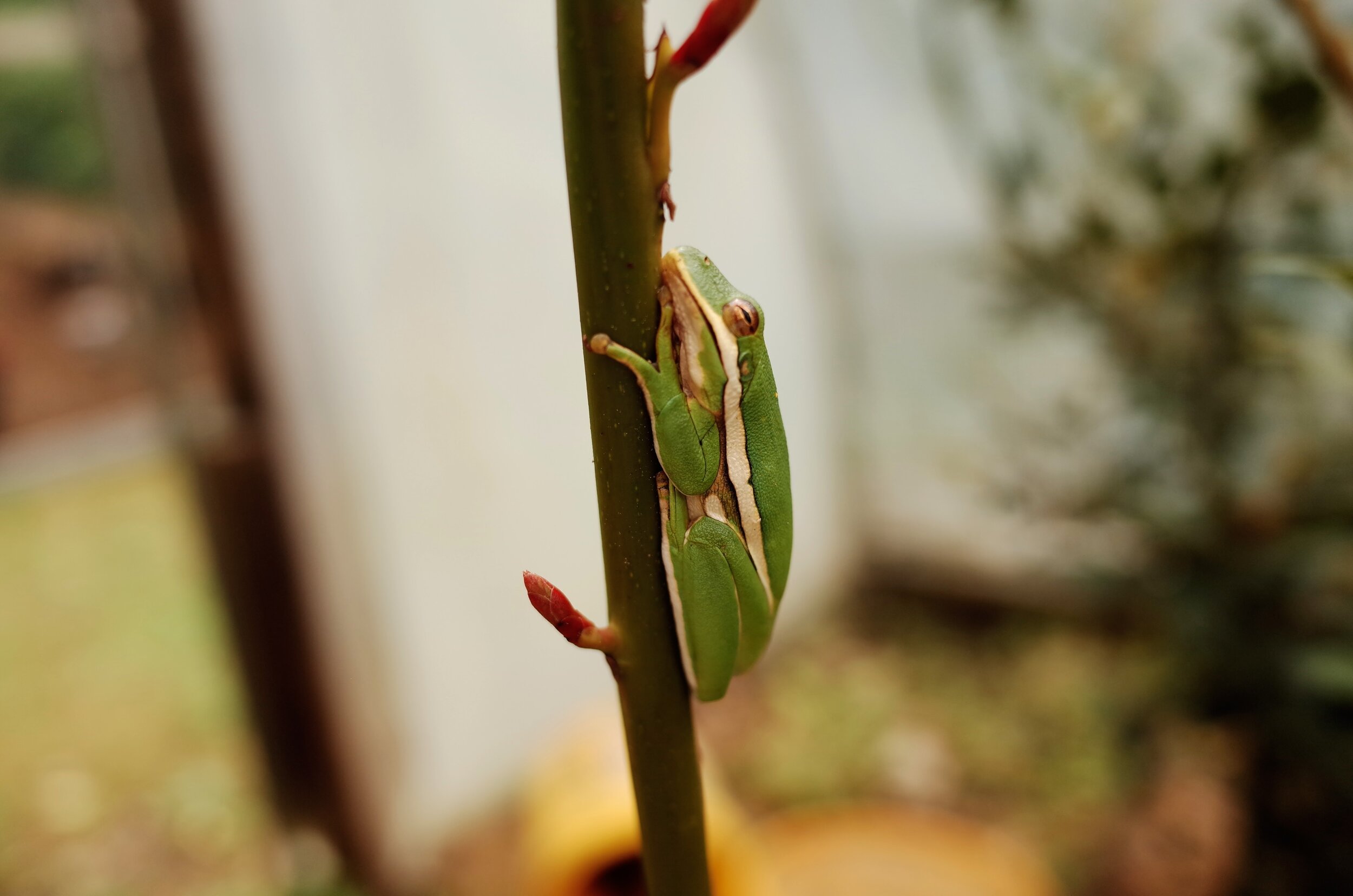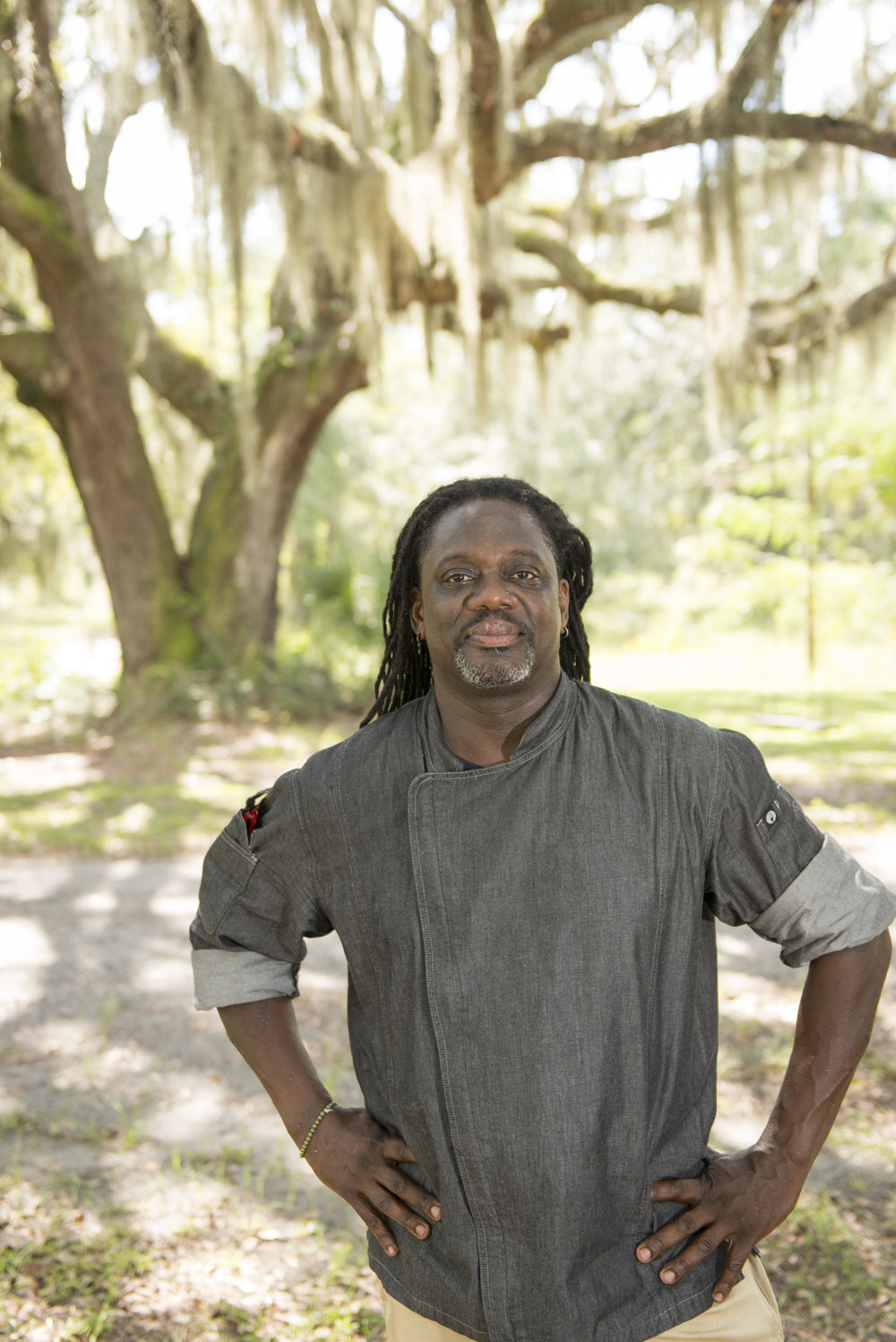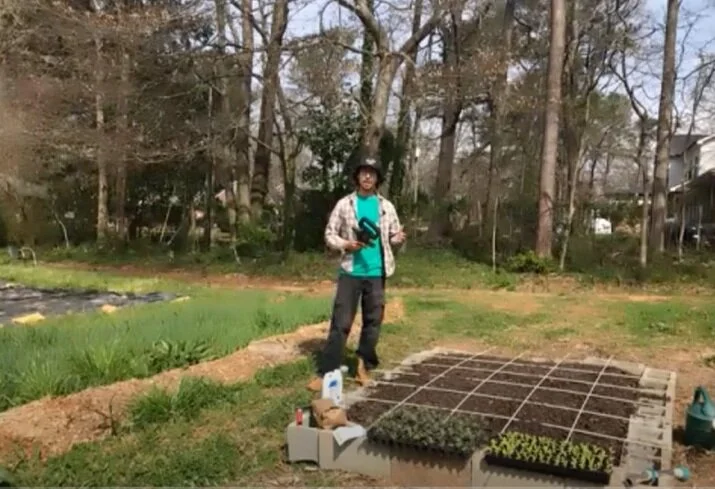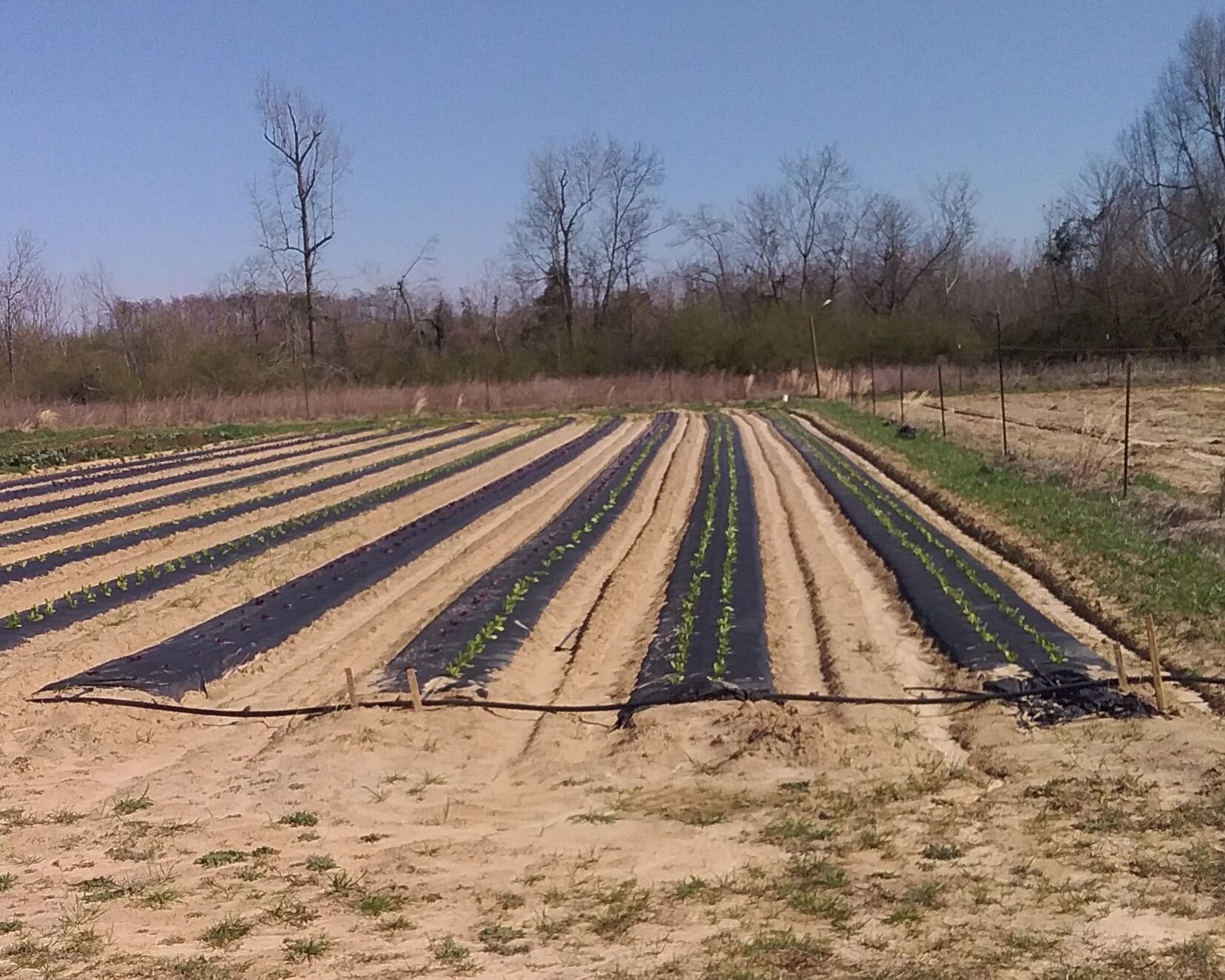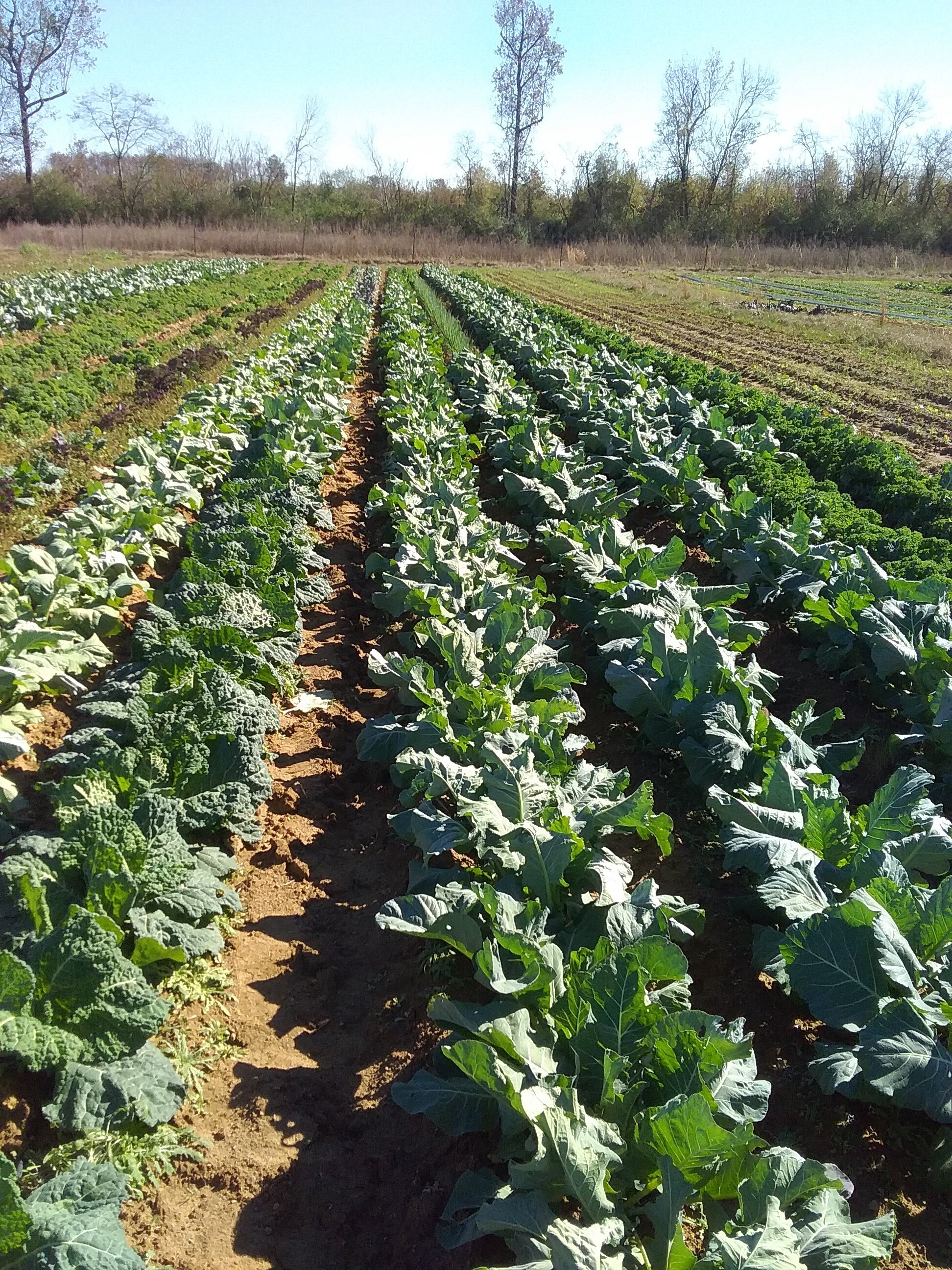By Mary Elizabeth Kidd
Photos by Kayla Williams
The Barbara Petit Pollinator Award is named in honor of Barbara Petit, a remarkable community food advocate who served as Georgia Organics' past president. This award acknowledges individuals with exceptional success advancing Georgia Organics' mission of "Good Food for All" by spreading—pollinating—the movement throughout community life.
This year's Barbara Petit Pollinator Award winners are
Brennan and Gwendolyn Washington of Phoenix Gardens in Lawrenceville!
Celebrate Brennan & Gwendolyn - Thursday, May 27. Tix: georgiaorganics.org/awards.
The Washingtons are successful farmers and icons of ag leadership in Georgia and the Southeast; they offer an urban agriculture education-focused property that has indeed risen from the ashes and thrives, impacting countless farmers across the Southeast.
Listen to the Washingtons on Georgia Organics' podcast the Atlanta Foodcast!
"We are 'accidental' farmers."
Theirs is a story of chance—fate, more likely—persistence, and resilience. And through it all, spreading and deepening the roots of sustainable farming in Georgia and beyond.
Brennan and Gwendolyn Washington are both natives of the northeast with successful technology and customer service careers, respectively. They began as avid gardeners, even before relocating to Georgia, growing food using natural methods to feed themselves.
Soon enough, the garden began producing more than they could eat, Gwendolyn discovered the Lawrenceville Farmers Market, and the rest, as they say, is history. Well, "that, and Gwendolyn insisted that my gardening activities would have to start paying for themselves," Brennan adds.
Today, Phoenix Gardens is a thriving 2.5-acre diversified farm growing a wide variety of vegetables, fruit, and herbs and keeping a flock of laying hens. They participate in the Norcross and Tucker Farmers Markets and offer their own online market (phoenixgardens.net/).
But growing and selling beautiful food is just the tip of the iceberg for this farming couple. In their 15+ years of farming, they have had a strong influence in guiding the security and future of sustainable agriculture and have launched countless new farms along the way.
As a "pollinator" of natural food-growing practices, Brennan's role with Southern SARE (southern.sare.org/) extends the impact of their expertise and resource sharing far beyond Georgia. At Southern SARE, Brennan serves as the 1890 Land Grant Liaison and Limited-Resource/Minority Farmer Outreach Specialist. In Georgia, Phoenix Gardens is often a training ground for HABESHA cohorts and a whole host of other prospective and current farmers.
Photos by Kayla Williams
What factors have gotten them this far in their impressive farming career? "Resiliency, Passion and Love."
As a farming couple, they cite individual characteristics that meld to form a successful partnership: "Brennan has an easy-going, patient manner. He also likes to try new things and tinker with new ways of doing things. Gwendolyn is a natural people person. We call her our social butterfly and those qualities have made her really good with our customers."
Our conversation with Brennan and Gwendolyn about the heart of their work as farmers and mentors follows:
How did you select 'Phoenix Gardens' as your farm name?
Shortly after we moved into our home, we received a notice from Gwinnett County indicating that our property may be seized for a road project. After an almost agonizing year of waiting, we received a notification saying our property wouldn't be needed. Gwendolyn and I said we rose from the ashes like the phoenix and Phoenix Gardens was formed. Our name took on a deeper meeting when our home was destroyed by a fire in 2015.
Photos by Kayla Williams
What is your WHY in farming? What motivates you to continue doing what you do?
Well, first of all, we enjoy it. We have a passion for it and will continue to do it as long as we can physically. We are also deeply motivated to be a resource for new farmers, especially Black and Brown farmers. If the renewed interest in local foods continues, as we believe it will, we need to nurture new farmers to meet demand and build local communities.
What are some of the hurdles you've overcome in your career?
We've had to overcome quite a few challenges over the years. Aside from the road-building issues and the fire detailed earlier, we have had to deal with some health issues that severely hampered our ability to work the farm. Brennan had to undergo some major back surgery about ten years ago that brought us to the brink of financial ruin. The farm has presented us with very few challenges. It's been the personal issues that everyone has to deal with that have presented us with our greatest challenges as they often become aggravated when you operate a farm.
How has mentorship factored into your work, and who are some folks you have mentored who have continued to farm?
We have been both mentees and mentors over the past 16 years. We are graduates of the Georgia Organics Mentoring Program, and Brennan also played a role in helping to mentor farmers. Among the farmers we have helped: Jamila Norman of Patchwork City farms, Andrea Ness of Aluma Farms, Keisha and Warren Cameron of High Hog Farms, and Monica Booker of Keeyah Gardens. We've also worked closely with HABESHA Works to put on training programs for their cohorts and host them at our farm. Through his work with Southern SARE, Brennan has helped countless farmers and organizations all across the Southeast and the United States Virgin Islands and Puerto Rico to help grow farmers and local food systems.
Did anyone mentor or inspire you in farming?
Aside from the Georgia Organics Mentoring Program, we have benefitted immensely from the Southern University Small Farm Agricultural Leadership Program. This was a two-year experience that helped broaden our knowledge of agriculture in the Southeast and connected us with many invaluable people in helping us throughout our farming career. Equally valuable were the state and regional conferences such as those put on by Georgia Organics and the Sustainable Agriculture Working Group.
What do you hope your lasting impact will be?
We hope that when people think of Phoenix Gardens and Brennan and Gwendolyn, they will say they were solid and helpful supporters. Not only did they grow healthy food, but they also encouraged and helped other farmers to do the same. We hope we leave behind a legacy of support and outreach that people found valuable and hopefully encourages them to do the same.
What's next for the farm and y'all?
Well, we're getting close to retirement, so our plan is to transition the farm to more of an educational model and to figure out to bring in some farmers to run the operation once we head out to pasture.
Of course, we'll continue to work on important projects, among them helping to develop a new version of a southeastern sustainable agriculture regional conference increasing agricultural ties between farmers of color on the mainland and US territories, and continuing to ensure that farmers have access to the resources that can help them be sustainable for some time.
What does winning this award mean to you?
It means a lot to us. We knew and worked with Barbara Petit and appreciated her passion for local food systems. While we have done a lot of our work in the shadows, it is nice to get some recognition for the work we have done, especially Gwendolyn. We have been around as long as Truly Living Well and Metro Atlanta Urban Farm, yet we are often left out of conversations when it comes to local food system work in Atlanta and Georgia, so it's nice to have some recognition tossed our way. Winning this award means that we have helped to advance local food system work not only in Atlanta but beyond as well, and we believe that this award will help us to continue to advance this work.
Want to help us honor Chris, Jenny, Gwendolyn, and Brennan? You can make a contribution in their name for our award honorariums.
Join us online to meet and celebrate Brennan and Gwendolyn Washington on Thursday, May 27, at 6 p.m. This event is FREE for Georgia Organics members. To learn more and register, visit georgiaorganics.org/awards.
Listen to the Washingtons on Georgia Organics' podcast the Atlanta Foodcast!
Mary Elizabeth Kidd is the Director of Communications at Georgia Organics. To learn more about Georgia Organics, visit www.georgiaorganics.org and follow us on Instagram @GeorgiaOrganics, Twitter @GeorgiaOrganics, and at www.Facebook.com/GeorgiaOrganics.







